Water underfloor wiring diagram: versions and device manual
Water-type underfloor heating is becoming more and more popular with owners of private houses heated from a boiler. The combined system, equipped according to all the rules, has been working properly for 15-20 years. A well-chosen scheme for connecting a water heat-insulated floor (ECP) provides a coolant supply, heating it to the desired temperature and distribution along the contours.
In this article, we will analyze in detail the features of the assembly of the collector assembly and the system connection diagram. We also provide detailed installation instructions. But first, consider when the water floor becomes useful, and when it is impractical to arrange it.
The content of the article:
Restrictions for mounting an ECP
Manufacturers of components for underfloor heating (TP) do not always specify whether there are restrictions for installing water systems, but they exist. In some cases, it is prohibited to install heating structures.
Where it is not customary to install water floors:
- In multi-apartment buildings. Central heating is distributed between the apartments. An additional connection in one of them will lead to heating and hydraulic imbalance.
- In public places. Underfloor heating is considered to be ineffective, since heat losses are large, and essentially economical systems become expensive during operation.
- In residential buildings with insufficient thermal insulation as the main source of heat. One of the conditions for installing underfloor heating in the northern regions is a reduction in heat loss due to wall insulation and floor, as well as the installation of radiators around the perimeter of the premises, under the windows.
The combination of traditional radiator heating with underfloor heating is recognized as the most effective heating system, and heating batteries remain the main sources of heat.
But sometimes the system, hidden under the floor, plays a major role:
Warm floors, equipped in compliance with standards and technological nuances, are safe, hygienic and do not affect the aesthetics of the premises.
And for the functionality and ease of use, the selected connection scheme is responsible, the description of which will be discussed in more detail.
Analysis of the connection diagram with the collector
There are several options for designing a water TP system. But the most practical and rational design is recognized with collector - multifunctional unit distributing the coolant.
The principle of heating
The main source of heat supply in the house, as a rule, is an autonomous generator, the function of which is usually performed by the boiler. The type of boiler does not matter, but it is estimated that gas costs 6-7 times cheaper than electric.
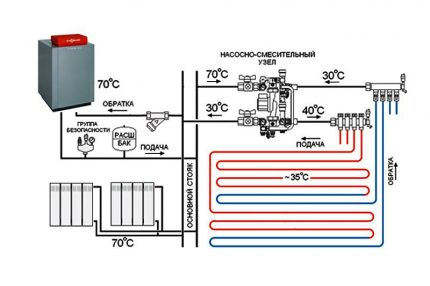
The temperature of heating water for heating reaches 95 ° C. The system is closed and the return temperature is lower - approximately 65-70 ° С. But for a warm floor, these parameters are not suitable, the maximum allowable value is 55 ° C. In practice, the coolant enters the ECP pipes even more cooled - 35-45 ° С.
To adjust the desired temperature, a return line is connected to the circuits and set mixing unitmixing flows.
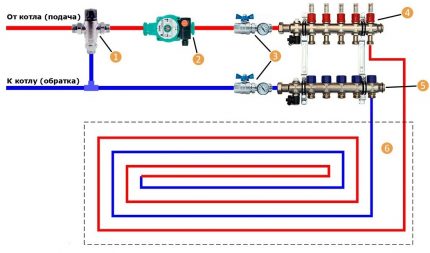
The temperature in the system can be adjusted manually, focusing on the data of temperature sensors. However, there are gas boilers designed for direct connection of the ECP. They automatically supply water with a pre-set temperature of 40-45 ° C.
Solid fuel boilers are difficult to regulate. For the coolant in the system with a solid-fuel generator to reach the norm, the installation of an additional buffer tank is required.
And here electric boilers They are ideally suited, since the desired temperature is maintained automatically, however, this is the most expensive heating method, not economically profitable.
Selection and assembly of the collector assembly
ECP circuits are connected to the heating system through a distribution manifold. This is a unit that allows you to adjust the flow of the coolant, control the temperature and flow, balance the circuits, and remove air from the system. For each function, individual elements are responsible: pump, flow meters, manometer, thermostats.
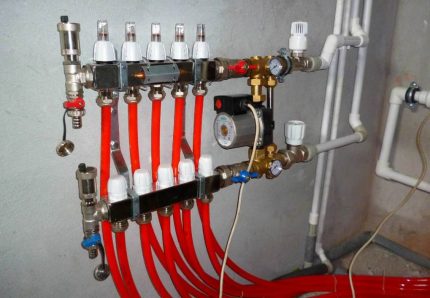
In order to choose the right components for the assembly of the mixing-manifold assembly, it is better to hire a specialist who is well versed in the quality of parts on the market.
The main elements of the node:
In addition to the listed components, fittings (axial, compression or press fittings), special brackets are needed. The entire assembly is usually placed in a manifold cabinet, which may have a different design and installation location.
Step-by-step installation instructions
The water floor is connected to the heating system at the final stage, when the construction work is fully completed, the collector cabinet is assembled and installed.
The whole process of installing the VTP system includes the following steps:
- Design, calculations, charting.
- Foundation preparation installation of insulation;
- Right pipe laying and fasteningreinforcing mesh;
- Filling the circuits with coolant, hydraulic tests.
- Pouring screedslaying the finish flooring.
- Connection to the system, balancing circuits.
- Commissioning, testing.
As you can see, the connection activities are carried out at the very end. And here the contour balancing plays an important role. Each loop has a different length, respectively, all circuits differ in hydraulic resistance.
Instructions for connecting pipes:
If you install the collector assembly without flow meters, the heating function will be impaired. When the system is put into operation, the coolant will tend to get into smaller circuits, with minimal resistance. As a result, rooms with short circuits will be heated according to the design, and with long ones they will remain unheated.
Balancing should begin when the collector is connected to the supply and return pipes.
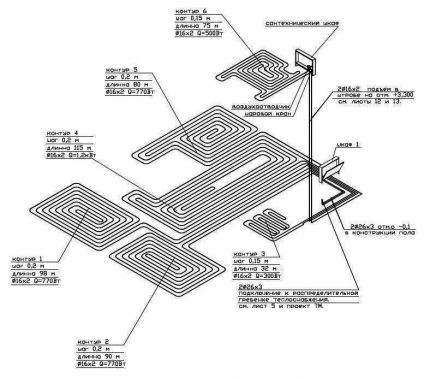
Balancing Instructions:
- Open the supply and return valves alternately. Ensure that the air vents are also open.
- With the boiler turned off, turn on the circulation pump and set the thermostat to maximum temperature.
- Bring the system pressure to normal - 1-3 bars.
- Close valves on all circuitsLeave only the longest. Record flow meter data.
- Open the valve on the second longest loop. Adjust the flow rate to the first result using the balancing valve.
- Continue to open the valves on the circuits one at a time, from long to short, adjusting the flow rate to one value (the first).
With the help of convenient functionality, you can always adjust the flow parameters. But you will have to do everything manually, focusing on the value in the longest contour.
It is forbidden to start operation immediately at full power, the temperature of the coolant in the system should be raised gradually. On the first day, water is supplied slightly above room temperature - +25 ° C, then 5-6 ° C is added every day. The desired temperature is set on the thermostat.
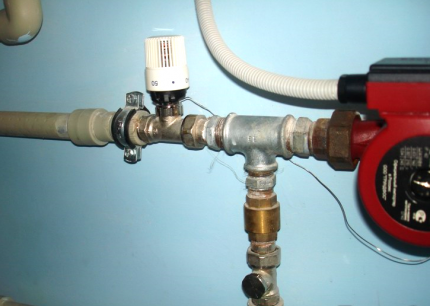
It is not necessary to raise the speed of the pump; it is better if it works on the first one. The normal temperature difference at the supply and return is 5-10 ° C, but if the value is higher, then the pump speed can be increased.
Connection diagram from a heating radiator
Sometimes, instead of the scheme “boiler - mixing-collector unit - circuits”, other options for connecting a warm floor are used. And the most common of them is the connection of the ECP circuit to the heating radiator.
The scheme looks like this:

The minus of the scheme is the seasonal use of the warm floor. As you know, heating radiators are not used in the summer, therefore, the floor will also remain cold.
So that the temperature of the coolant does not rise above normal, a special sensor with a valve is included in the circuit. It automatically shuts off the flow of water as soon as it becomes too hot. When the coolant has cooled to an acceptable temperature, thermal valve opens again.
This type of VTP can be arranged without a pump and mixing unit. The only adjustment tool is a thermostatic device mounted on the feed pipe.
Conclusions and useful video on the topic
Overview of connection methods:
Option to connect a circuit without a collector:
How to assemble a pump and mixing unit
When choosing a circuit for connecting the ECP to the heating system, it is better to consult a specialist to take into account all the nuances of further operation.
If there are no skills in self-assembly of the collector-mixing unit, we recommend buying ready-made.
Use your own assembled and connected underfloor heating and want to share useful installation tips and warn beginners about possible errors? Write your comments in the block below, add photos and recommendations.
Maybe you have questions about the topic of the article? Feel free to ask them to our experts below under this material.

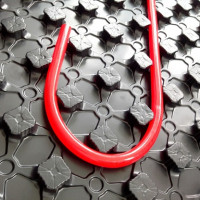 Mats for underfloor heating: selection tips + styling guide
Mats for underfloor heating: selection tips + styling guide 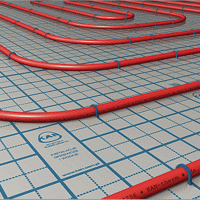 Laying schemes for a warm water floor: analysis of the most effective installation options
Laying schemes for a warm water floor: analysis of the most effective installation options 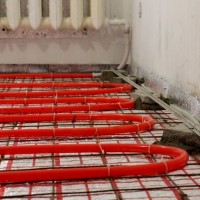 How to connect a warm floor with your own hands: the steps of connecting a water floor
How to connect a warm floor with your own hands: the steps of connecting a water floor 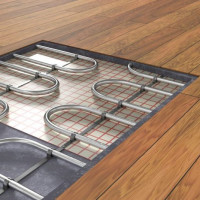 Insulation for warm water floors: rules for selection and installation
Insulation for warm water floors: rules for selection and installation 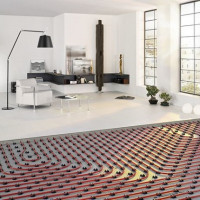 Pipes for underfloor heating: a comparative overview of all options + design tips
Pipes for underfloor heating: a comparative overview of all options + design tips 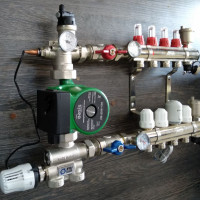 Mixing unit for underfloor heating: installation rules for the distribution manifold
Mixing unit for underfloor heating: installation rules for the distribution manifold  How much does it cost to connect gas to a private house: the price of organizing gas supply
How much does it cost to connect gas to a private house: the price of organizing gas supply  The best washing machines with dryer: model rating and customer tips
The best washing machines with dryer: model rating and customer tips  What is the color temperature of light and the nuances of choosing the temperature of the lamps to suit your needs
What is the color temperature of light and the nuances of choosing the temperature of the lamps to suit your needs  Replacement of a geyser in an apartment: replacement paperwork + basic norms and requirements
Replacement of a geyser in an apartment: replacement paperwork + basic norms and requirements
The warm floor is a cool thing, relatives have installed one and are not overjoyed. Their cat especially enjoys, which can now warm their belly just by lying on the floor. Moreover, the first floor of their house is heated exclusively by warm water floors. Their floors are covered with ordinary laminate. They did all this, of course, not on their own, but hired craftsmen. I would also not dare to make a warm water floor myself, it’s not easy and fraught with mistakes, but the whole thing is not cheap.
Do I need to get any permissions for installing a warm water floor in Khrushchev? The third floor, from the central heating plan to do.
I have to upset you: the fact is that prefabricated houses that were built between the 1950s and 1980s simply do not functionally fit for laying pipes of a warm water floor.
There are several reasons for this:
- small height of the ceilings (“cake” of a warm water floor 10+ cm);
- the ability to install a boiler is difficult;
- The central heating system is not designed for such projects.
All this leads to the fact that you get a high starting cost for equipment and installation.
For Khrushchev, it will be more practical to realize a warm floor based on a heating film. This is due to the fact that for heating from an IR film, a cement screed is not needed, the elements can be laid directly under the flooring itself. But before installing an infrared film warm floor, make sure that the wiring of the apartment is designed for such loads.
Hello. Yes, of course, since the arrangement of a warm water floor will create an additional load on the system. The first thing to do is go to the Criminal Code and there they will tell you everything. However, for example, in Moscow, clause 11.8 of Appendix 1 of PPM 508-PP is in force, prohibiting such structures. It is necessary to clarify at the regional level whether you have such prohibitions in the city.